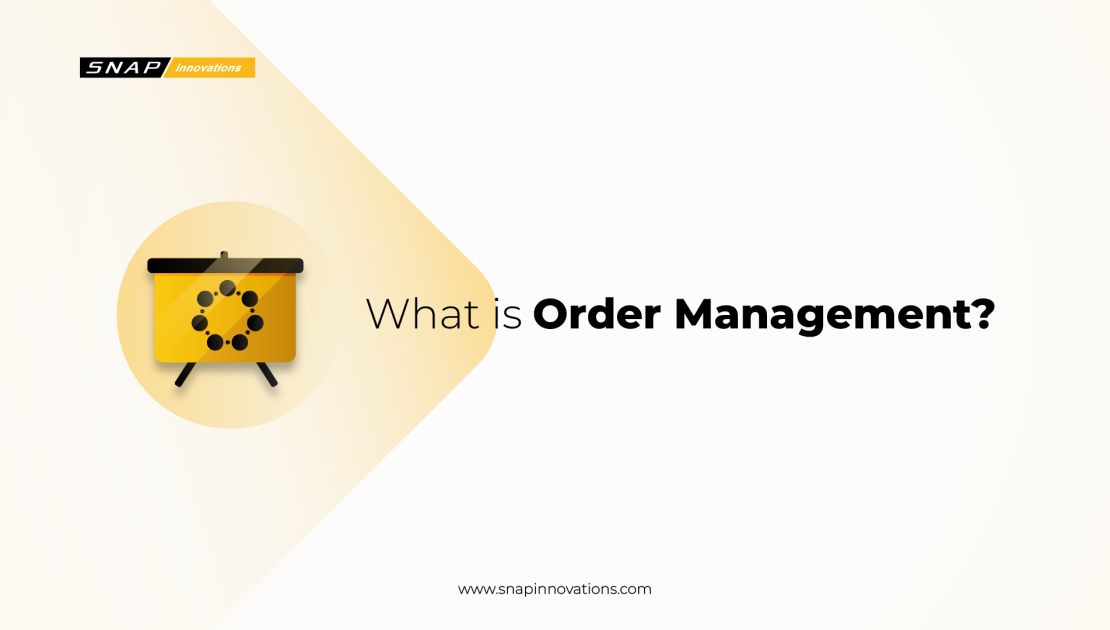In a world where business is increasingly migrating online, mastering the art of order management has become more crucial than ever before. Order management is not just a term; it’s a powerful strategy and an essential part of operations that can markedly affect a company’s success. By delving into the essentials, benefits, and the transformative potential of a robust order management system, this article will be your compass in navigating its complexities and unearthing practical insights to bolster your business operations.
Embark on this enlightening journey as we unravel what order management truly entails, its pivotal role in customer satisfaction, and the operational brilliance it can usher in. In a conversational and friendly tone, this article will explore various facets of order management, offering an engaging yet informative guide to harnessing its full potential.
What is Order Management?
 Order management is the backbone of ecommerce and retail businesses, acting as a multifaceted process that oversees the entire lifecycle of a customer’s order. From the initial point of customer contact, through the labyrinth of inventory management, to the final stages of delivery and returns, it weaves together various strands of a business operation into a coherent and efficient system.
Order management is the backbone of ecommerce and retail businesses, acting as a multifaceted process that oversees the entire lifecycle of a customer’s order. From the initial point of customer contact, through the labyrinth of inventory management, to the final stages of delivery and returns, it weaves together various strands of a business operation into a coherent and efficient system.
Understanding order management is akin to unlocking a treasure trove of operational efficiency. It ensures that each order is processed, managed, and fulfilled smoothly, forging a path to customer satisfaction. The role it plays is vast, covering inventory visibility, order processing, and even the orchestration of returns and exchanges.
Also Read: What is Algo Trading? Revolutionizing Financial Markets
In its essence, order management acts as a maestro, orchestrating various sections of a business’s operational symphony, ensuring each plays its part to perfection. By cultivating a harmonious flow between different processes, it promotes not only efficiency but also bolsters a business’s ability to meet and exceed customer expectations.
The Importance of a Robust Order Management System
Having a robust order management system is like having a superpower in the competitive business landscape. It fosters accuracy, speed, and reliability in order processing, which are quintessential for achieving customer satisfaction and loyalty. In a world that’s ever-evolving and fiercely competitive, a strong order management system becomes the pillar supporting a business’s sustainability and growth.
An effective order management system simplifies the complexities inherent in handling diverse orders across various channels. It ensures that the business engine runs smoothly, adapting to changes, meeting deadlines, and ensuring that customers receive their orders accurately and promptly. This adaptability and precision become the keys to unlocking unprecedented customer satisfaction and trust.
Investing in a robust order management system can be transformative. It’s not just about handling orders; it’s about optimizing inventory, streamlining processes, and gaining actionable insights to make informed business decisions. Essentially, it becomes a catalyst for continuous improvement, driving a business towards operational excellence and customer delight.
An efficient order management system is also pivotal in cultivating strong supplier and partner relationships. By ensuring that processes are streamlined and accurate, it enhances collaboration and mutual growth, fostering strong, beneficial partnerships that contribute significantly to business success.
Overcoming Challenges in Order Management
In the realm of order management, challenges are inevitable. However, with a nuanced understanding and strategic approach, overcoming these hurdles becomes a reachable feat. One of the core challenges lies in inventory management – ensuring that stock levels are maintained optimally to meet customer demands without resulting in overstock or stockouts.
Furthermore, managing customer expectations is a battlefield in itself. In an era where customers demand swift and accurate services, managing and fulfilling their expectations, while maintaining operational efficiency, becomes pivotal. This necessitates a system that is resilient, flexible, and capable of adapting to various customer needs and market fluctuations.
Lastly, technology integration is vital. In a world driven by technological advancements, having an order management system that integrates seamlessly with various technologies and platforms is essential. This not only simplifies processes but also facilitates a smooth, efficient, and tech-savvy approach to order management, propelling businesses into a realm of modernity and excellence.
Technologies Paving the Way in Order Management
 Technology is a driving force in enhancing order management systems, bringing innovation and efficiency to the forefront. Automation, for instance, has emerged as a revolutionary aspect, streamlining processes and reducing manual errors, thereby enhancing overall productivity and customer satisfaction.
Technology is a driving force in enhancing order management systems, bringing innovation and efficiency to the forefront. Automation, for instance, has emerged as a revolutionary aspect, streamlining processes and reducing manual errors, thereby enhancing overall productivity and customer satisfaction.
Additionally, the integration of artificial intelligence (AI) and machine learning (ML) in order management systems has brought a wealth of benefits, including predictive analytics, personalized customer experiences, and enhanced decision-making. These technologies usher in a new era of intelligence, enabling businesses to operate with heightened accuracy and foresight.
Data analytics, too, plays a crucial role. With the capability to analyze and interpret vast amounts of data, it provides businesses with invaluable insights into customer behavior, order patterns, and market trends. This information becomes the cornerstone for making informed and strategic business decisions, driving success, and innovation.
Moreover, cloud-based order management systems offer flexibility, scalability, and accessibility, essential attributes in today’s dynamic business environment. These systems ensure that businesses can operate seamlessly, adapting to changes, and meeting customer needs efficiently, reinforcing the foundations of operational excellence.
Strategies for Enhancing Your Order Management
 Enhancing your order management necessitates a blend of strategies that focus on customer satisfaction, operational efficiency, and continuous improvement. Firstly, ensuring that your order management system is customer-centric is paramount. This involves facilitating easy order placements, returns, and providing real-time updates, culminating in a delightful customer experience.
Enhancing your order management necessitates a blend of strategies that focus on customer satisfaction, operational efficiency, and continuous improvement. Firstly, ensuring that your order management system is customer-centric is paramount. This involves facilitating easy order placements, returns, and providing real-time updates, culminating in a delightful customer experience.
Furthermore, cultivating an environment of continuous improvement and innovation is key. This involves regularly updating and optimizing your order management processes and systems to meet evolving customer needs and market dynamics. A culture of learning and adaptation fosters resilience and a readiness to navigate the changing tides of the business landscape.
Alignment between various business processes and departments is also essential. This holistic approach ensures that each aspect of the business operates harmoniously towards common objectives, promoting overall business efficiency, and success.
In addition to these strategies, leveraging technological advancements is crucial in enhancing order management. In the age of digital transformation, incorporating innovative technologies such as Artificial Intelligence (AI), Machine Learning (ML), and automation can revolutionize the order management process, making it more agile, accurate, and efficient. These technologies can facilitate predictive analytics, intelligent automation, and improved decision-making, which are instrumental in optimizing inventory levels, forecasting demand, and improving customer service.
Moreover, embracing a data-driven approach is fundamental. Harnessing the power of data analytics can provide valuable insights into customer behavior, preferences, and purchasing patterns, enabling businesses to make informed decisions that align with market demands. This not only improves the accuracy of order processing but also enhances the overall customer experience, as products and services can be customized to meet individual needs and expectations. Thus, investing in technology and utilizing data intelligently are powerful strategies to elevate order management to new heights of excellence.
Best Practices in Order Management
1. Customer-Centric Approach:
A customer-centric approach is at the heart of successful order management. Tailoring the process to meet and exceed customer expectations should be paramount. Every step, from order placement to delivery, should be optimized to enhance the customer’s experience, ensuring satisfaction and loyalty. A positive customer experience not only fosters repeat business but also enhances the brand’s reputation through positive word-of-mouth and reviews.
In adopting a customer-centric approach, feedback becomes a powerful tool. Encouraging and carefully analyzing customer feedback provides valuable insights into areas that require improvement or modification. This ongoing interaction and adaptation to customer needs and preferences enable the continual refinement and improvement of the order management process, keeping it aligned with customer expectations and market trends.
2. Real-Time Inventory Visibility:
Real-time inventory visibility is essential for managing orders effectively and meeting customer expectations. It ensures that the business can make informed decisions regarding stock levels, order fulfillment, and delivery times. Accurate inventory data prevent issues such as overstocking or stockouts, facilitating a smooth order processing and fulfillment operation that resonates with efficiency and customer satisfaction.
Ensuring that inventory data is accurate and readily available also enables better communication and service to customers. Customers can be provided with accurate information regarding product availability and delivery times, enhancing their experience and satisfaction. It also allows for quick and effective decision-making in response to changes in demand, maintaining operational efficiency and responsiveness.
3. Seamless Communication Channels:
Implementing seamless communication channels is pivotal for the coordination and efficiency of the order management process. Effective communication facilitates the flow of information between various stages of order processing, from customer service to inventory management and dispatch. This ensures that each component of the order management system is aligned, informed, and functioning cohesively.
In addition, clear and efficient communication channels enhance the business’s ability to respond to customer inquiries, issues, or changes effectively. It ensures that customers are kept informed, enhancing their experience and satisfaction. It also fosters a more adaptable and responsive order management process, able to effectively navigate challenges and changes.
4. Embrace Automation:
Automation stands as a pillar in optimizing order management processes. By automating repetitive and time-consuming tasks, the system can function with enhanced accuracy and efficiency. Automation minimizes the risk of human error and streamlines workflows, facilitating a smoother, more reliable order management process that can handle higher volumes of orders with ease.
The incorporation of automation also frees up valuable human resources, allowing them to focus on more strategic aspects of order management, such as customer service and process improvement. This balance between automation and human input creates a more dynamic and effective order management system, poised for success and continual improvement.
5. Continuous Analysis and Updating:
The business landscape is ever-evolving, and as such, continuous analysis and updating of the order management processes are essential. Regular reviews and adaptations ensure that the system remains aligned with current market trends, customer expectations, and technological advancements. This ongoing improvement fosters a dynamic order management system capable of navigating the complexities and challenges of the business environment.
Continuous analysis also facilitates the identification of areas for improvement or optimization within the order management process. It fosters innovation and the continual enhancement of strategies and processes, ensuring that the order management system evolves, adapts, and thrives in the changing business landscape.
6. Integration with Other Systems:
Integration with other essential business systems such as Customer Relationship Management (CRM), Enterprise Resource Planning (ERP), and ecommerce platforms is crucial for the cohesiveness and efficiency of order management. Integration facilitates the flow of information and coordination between various business processes, enhancing overall operational harmony and efficiency.
A well-integrated system ensures that information is consistent and readily available across all platforms, improving decision-making and customer service. It fosters a more unified and streamlined business operation, where various systems work cohesively towards common objectives, enhancing the overall performance and success of the order management process.
Read More: MultiAsset Trading Software: Streamlining Your Investment Portfolio Management
Conclusion
In short, Order management is not merely a process but a strategic asset in propelling a business towards operational excellence and customer satisfaction. Its mastery is essential in navigating the complexities of the business landscape, meeting customer needs, and fostering a culture of continuous improvement and innovation.
By embracing the essential concepts, technological advancements, and strategic approaches in order to management, businesses are better positioned to thrive in the competitive market, achieving not only customer satisfaction but also sustainable growth and success. So embark on the journey of mastering order management, and unlock the doors to unprecedented business brilliance.
As we venture further into an era marked by technological upheaval and evolving consumer expectations, order management remains a steadfast pillar supporting business adaptability and resilience. Its strategic implementation fosters an environment where customer-centric approaches flourish, facilitating tailored services that resonate with individual needs and preferences.
In this light, order management transcends conventional transactional boundaries, metamorphosing into a comprehensive strategy that underscores the essence of customer relationships in driving business success. Adopting a refined approach to order management thus becomes a transformative journey, enabling businesses to redefine excellence in service delivery and stake a formidable position in the competitive market landscape. Happy Learning!

